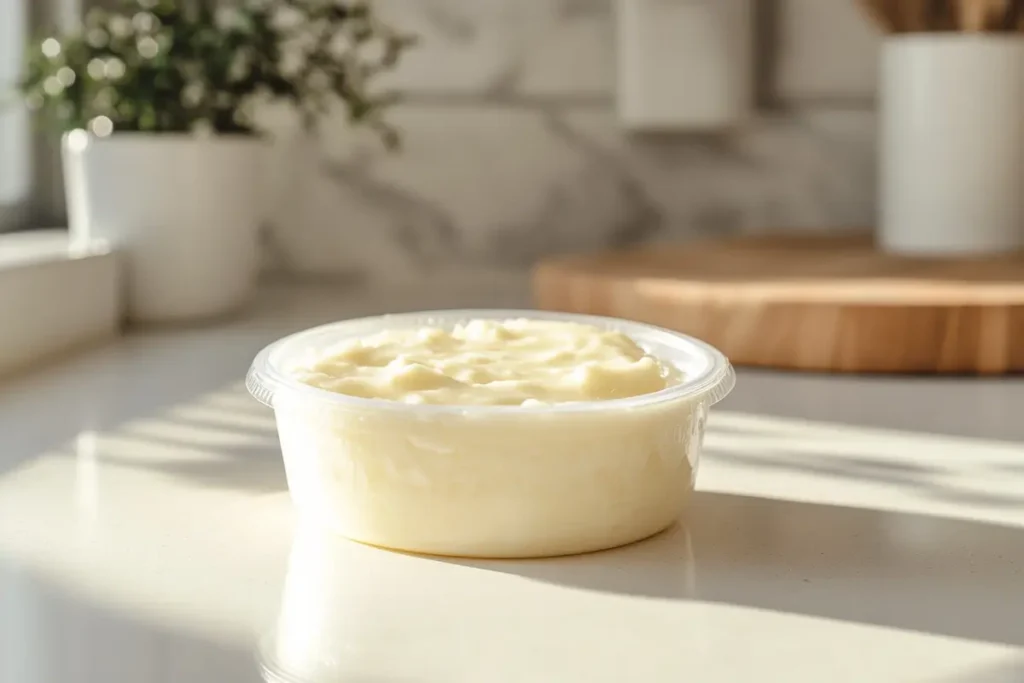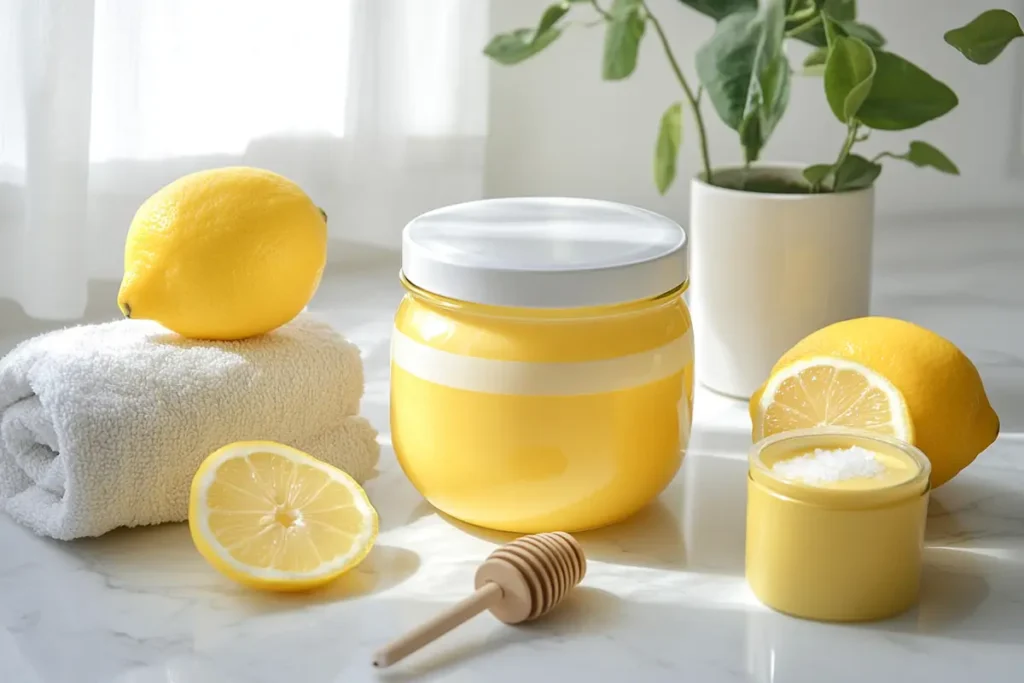Understanding Protein Pudding
At its core, protein pudding is a creamy, indulgent dessert fortified with extra protein, often from sources like whey, casein, or plant-based powders. But understanding the shelf life of protein pudding is crucial to ensure you enjoy it at its freshest and safest. Unlike traditional puddings that rely solely on sugar and thickeners, protein puddings boast a healthy boost of nutrients designed to support muscle recovery, satiety, and overall wellness.
Popular in both the fitness community and among casual snackers, this pudding can be enjoyed as a post-workout treat or a guilt-free dessert. Whether store-bought or homemade, the ingredients you choose will directly affect its flavor, texture, and, most importantly, how long it stays fresh.
Nutritional Content of Protein Pudding (Per 100g)
| Nutrient | Amount (per 100g) |
|---|---|
| Calories | 120 kcal |
| Protein | 10g |
| Fat | 3g |
| Carbohydrates | 14g |
| Sugars | 8g |
| Fiber | 1g |
| Sodium | 150mg |
Types of Protein Puddings
- Ready-to-eat Commercial Protein Puddings
Commercial protein puddings are typically found in convenient, sealed packages that can last for months on the shelf due to added preservatives. Some brands even add stabilizers and specific sweeteners designed to extend freshness, making these puddings ideal for those with busy schedules. - Homemade Protein Puddings
Homemade versions, on the other hand, offer complete control over ingredients. You can use dairy or non-dairy bases, flavored protein powders, or fresh fruit toppings, depending on your preferences. For more inspiration, check out this protein pudding recipe. However, since there are usually no preservatives in homemade puddings, their shelf life tends to be much shorter. - Variations in Ingredients and Additives
Whether it’s a pre-packaged protein pudding or one you whipped up at home, the ingredients play a starring role in its shelf life. Higher sugar content, the use of stabilizers, or fresh additions like fruit can all impact how long your pudding stays safe to eat.

Factors Influencing Shelf Life
Ingredients and Their Impact
The shelf life of protein pudding largely depends on what’s inside. Some ingredients act as natural preservatives, while others speed up spoilage. Let’s break it down:
- Dairy and Non-Dairy Bases:
If your protein pudding contains milk, cream, or yogurt, it’s more prone to spoilage compared to versions made with almond milk, coconut milk, or oat milk. Dairy-based puddings should always be refrigerated to prevent bacterial growth. - Protein Powders:
Whey and casein protein powders tend to create a thicker texture but don’t necessarily add to the pudding’s longevity. In contrast, plant-based proteins like pea or soy may cause the pudding to spoil faster if not stored properly due to their higher moisture absorption. - Sweeteners and Additives:
Artificial sweeteners such as sucralose or stevia don’t spoil as quickly as natural sugars. However, if you’re using fresh fruits or honey as a sweetener, your pudding may develop mold or lose its consistency faster.
Packaging and Storage Conditions
The way you store your protein pudding can either lengthen or shorten its shelf life significantly.
- Airtight Containers:
Homemade puddings stored in airtight glass jars or plastic containers last longer because they prevent exposure to moisture and air. On the flip side, loose-fitting lids can cause your pudding to dry out or absorb odors from other foods in the fridge. - Temperature and Humidity:
Protein pudding thrives in cold, stable temperatures. Ideally, keep it at around 35–40°F (1–4°C). Humidity can also affect texture—high moisture levels in your fridge can make the pudding runny. If you leave pudding at room temperature for too long, especially homemade versions, spoilage is almost inevitable after a few hours.
Presence of Preservatives

Preservatives are a game-changer for store-bought protein puddings:
- Common Preservatives:
Store-bought options often contain potassium sorbate or citric acid to inhibit bacterial growth and extend shelf life. These ingredients slow the spoilage process by preventing mold and yeast from forming. - Homemade Alternatives:
If you’re making your own protein pudding and prefer a more natural approach, you can use lemon juice, a pinch of salt, or a few drops of apple cider vinegar as natural preservatives. These can slightly extend its shelf life without compromising health.
Proper ingredient selection and mindful storage habits make a huge difference when it comes to keeping protein pudding fresh. In the next section, we’ll explore how the shelf life varies between store-bought and homemade protein puddings and how you can spot when it’s time to toss it out.
Shelf Life of Protein Pudding
Commercial Protein Puddings
Store-bought protein puddings are designed to last longer, thanks to their sealed packaging and added preservatives. Here’s what you need to know:
- Unopened Shelf Life:
Most commercial protein puddings have a shelf life of 6 to 12 months when stored at room temperature, as long as the packaging remains intact. This is due to vacuum-sealed or foil-sealed containers that prevent air from entering. - Opened Shelf Life:
Once opened, the clock starts ticking. An opened pack of protein pudding should be refrigerated immediately and consumed within 5 to 7 days. Beyond that, the texture may change, and bacteria could grow, especially if you’ve dipped a spoon in multiple times. - Storage Recommendations:
Always reseal the lid tightly or transfer the pudding into an airtight container. Avoid storing opened pudding in the refrigerator door, where temperatures fluctuate more, and opt for a middle or back shelf instead.
Homemade Protein Puddings

Homemade protein puddings may not last nearly as long as their commercial counterparts, but you can still extend their freshness with proper handling:
- Refrigerated Shelf Life:
Freshly prepared homemade protein pudding typically lasts 2 to 4 days in the refrigerator. Since homemade versions usually lack preservatives, they’re more susceptible to bacteria and spoilage. - Signs of Spoilage:
- Sour smell: If the pudding gives off a tangy, unpleasant odor, it’s likely gone bad.
- Separation of liquid: While some separation may occur naturally, excessive pooling or curdling indicates that the proteins have broken down.
- Mold growth: Any sign of discoloration or fuzzy spots means it’s time to toss it.
Impact of Storage Methods
- Refrigeration vs. Room Temperature:
Homemade protein pudding must be refrigerated. Leaving it out at room temperature for more than 2 hours—especially in warm weather—can lead to spoilage due to bacterial growth. - Freezing Protein Pudding:
Freezing is an option, but it can change the texture.Frozen protein pudding can last up to 3 months, but it may become grainy or lose its creaminess after thawing. Learn more about how long protein pudding lasts in the fridge.To minimize texture changes, stir the pudding thoroughly after defrosting and add a splash of milk or non-dairy liquid to restore creaminess.
Knowing the shelf life differences between store-bought and homemade protein puddings helps you plan your storage and consumption better. In the next section, we’ll share actionable tips to further extend the freshness and prevent unnecessary waste.
Best Practices for Extending Shelf Life
Proper Storage Techniques
The way you store your protein pudding can make or break its freshness. Here’s how to get the most out of every serving:
- Ideal Storage Temperatures:
Protein pudding thrives in temperatures between 35°F to 40°F (1.5°C to 4°C). Keeping it colder may cause it to freeze slightly, while anything warmer increases the risk of bacterial growth. - Use Airtight Containers:
Store homemade protein pudding in airtight glass jars or BPA-free plastic containers to keep moisture and air out. This also prevents it from absorbing odors from other foods in your fridge, like onions or garlic. - Avoid Double-Dipping:
Bacteria from used spoons can speed up spoilage. Instead, transfer a portion of pudding to a separate bowl before serving to keep the main batch fresh longer.
Use of Preservatives in Homemade Versions
You don’t have to rely on artificial preservatives to keep your homemade protein pudding fresh. Natural options work wonders too:
- Lemon Juice or Lime Juice:
A splash of citrus juice adds acidity, which helps slow the growth of bacteria and keeps the pudding fresher for an extra day or two. - Salt:
A small pinch of salt can act as a natural preservative without affecting the flavor too much. - Honey:
Honey has antimicrobial properties, so adding a small amount as a sweetener can help preserve the pudding. However, don’t overdo it if you’re watching your sugar intake.
Understanding Expiration Dates
Store-bought protein puddings come with labeled dates, but what do those really mean?
- “Best By” Date:
This is not an expiration date—it’s more of a quality guideline. The pudding is still safe to eat after this date, but its flavor and texture may not be at their peak. - “Use By” Date:
This is the date recommended for the product’s optimal safety and taste. Once past this point, consuming the pudding could pose a risk, especially if it contains dairy. - “Sell By” Date:
This date indicates when retailers should sell the product by. It’s not necessarily unsafe to consume after this date, but it’s best to check for any spoilage signs.
Additional Tips for Long-Term Storage
- Freeze in Individual Portions:
If you want to freeze homemade protein pudding, portion it out into small servings before freezing. This way, you only thaw what you need, preventing unnecessary waste. - Thaw Slowly:
Always thaw frozen pudding in the refrigerator instead of at room temperature to maintain its consistency and prevent bacterial growth.
By following these best practices, you can maximize the shelf life of both store-bought and homemade protein puddings. In the next section, we’ll tackle frequently asked questions to address common concerns about protein pudding storage and freshness.
Frequently Asked Questions About Shelf Life of Protein Pudding
How long does homemade protein pudding last in the fridge?
Homemade protein pudding typically lasts 2 to 4 days when stored in an airtight container in the refrigerator. However, this can vary depending on the ingredients used—puddings with fresh fruit or dairy tend to spoil faster.
Can you freeze protein pudding to extend its shelf life?
Yes, you can freeze protein pudding! When frozen, it can last up to 3 months. However, the texture may change and become grainy or slightly watery after thawing. Stirring in a bit of milk or cream after defrosting can help restore its creaminess.
What are the signs that protein pudding has gone bad?
Spoiled protein pudding often has a sour smell, a noticeable separation of liquid, or visible mold.If the texture becomes lumpy or the pudding changes color, it’s time to throw it out. If you’re wondering are protein puddings healthy, check the label for additives and sugar content.
Does the type of protein used affect the shelf life of the pudding?
Yes, the type of protein matters. Whey and casein proteins generally mix well and don’t drastically affect shelf life. However, plant-based proteins like pea or soy may hold moisture, potentially shortening the pudding’s freshness.
Are there any natural preservatives that can be added to homemade protein pudding?
Absolutely! You can add lemon juice, honey, or a pinch of salt to naturally extend the shelf life of homemade protein pudding without compromising taste or nutrition.
How does the sugar content in protein pudding influence its shelf life?
Higher sugar content can act as a mild preservative, as sugar binds to water and reduces bacterial growth. However, puddings with fresh fruit or natural sugars like honey may still spoil faster due to moisture content.
Conclusion
Understanding the shelf life of protein pudding helps you enjoy this nutritious treat without worrying about spoilage or waste. Whether you prefer store-bought convenience or the creativity of homemade recipes, knowing how long it lasts and the best ways to store it is essential.
For commercial protein puddings, the sealed packaging and preservatives ensure a longer shelf life, lasting several months unopened. However, once opened, it should be refrigerated and consumed within a few days. On the other hand, homemade protein puddings, while fresh and customizable, typically last only 2 to 4 days unless frozen. By paying attention to storage methods, ingredient choices, and spoilage signs, you can prevent unnecessary waste and enjoy your pudding at its peak.
In short, proper preparation and smart storage are the keys to keeping protein pudding fresh. So, whether you’re meal-prepping for the week or indulging in a quick post-workout snack, these tips will help you savor every bite!
For more healthy living tips and storage hacks, feel free to explore related resources and guides!

